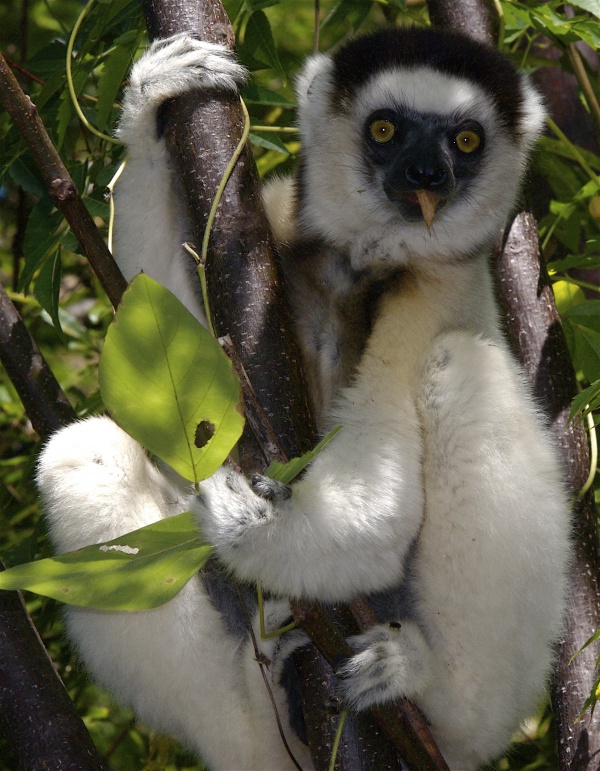Facts About Verreaux's sifaka
Verreaux's sifaka, also known as the white sifaka, is a captivating medium-sized lemur indigenous to Madagascar. These remarkable creatures are characterized by their thick, silky white fur embellished with brown patches. They inhabit a range of environments, from lush rainforests to dry deciduous forests.
One of the most intriguing aspects of Verreaux's sifakas is their distinctive mode of locomotion. On the ground, they move by hopping, while in the treetops, they use their long tails for balance, executing impressive leaps from tree to tree.
Adult Verreaux's sifakas typically measure between 42-45 cm in body length, with their tails adding an additional 56-60 cm. They weigh approximately 3.4-3.6 kg. These lemurs possess some unique features, such as a low, flat braincase, distinctive teeth, and specialized adaptations that make them well-suited for arboreal life.
Their diet primarily consists of leaves, fruit, bark, and flowers, categorizing them as herbivores. They usually forage in groups during the morning and late afternoon. Being diurnal, they are active during the day and spend most of their time in the trees, navigating by clinging to branches and leaping.
Verreaux's sifakas live in family groups where females hold dominance over males. Regarding reproduction, about 45% of females breed annually, typically giving birth to a single infant after a gestation period of 130 days. Newborns initially cling to their mother's stomach and later transition to her back. These young sifakas face threats from predators such as the fossa and raptors, which impact their survival rates. They reach sexual maturity between 3-5 years.
Unfortunately, Verreaux's sifaka is classified as Endangered by the IUCN and is listed in CITES Appendix I. Conservation efforts are critical due to the threats they face, including habitat fragmentation and severe droughts. Studies indicate that environmental factors significantly influence their population growth, highlighting the importance of long-term protection strategies to ensure their survival in the wild.
